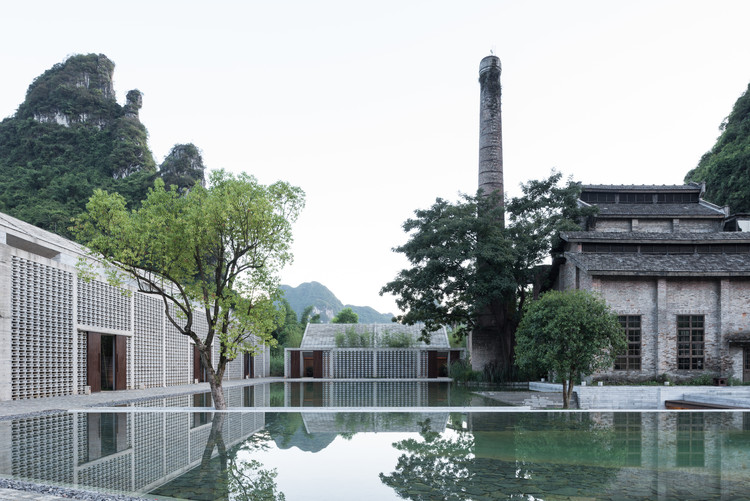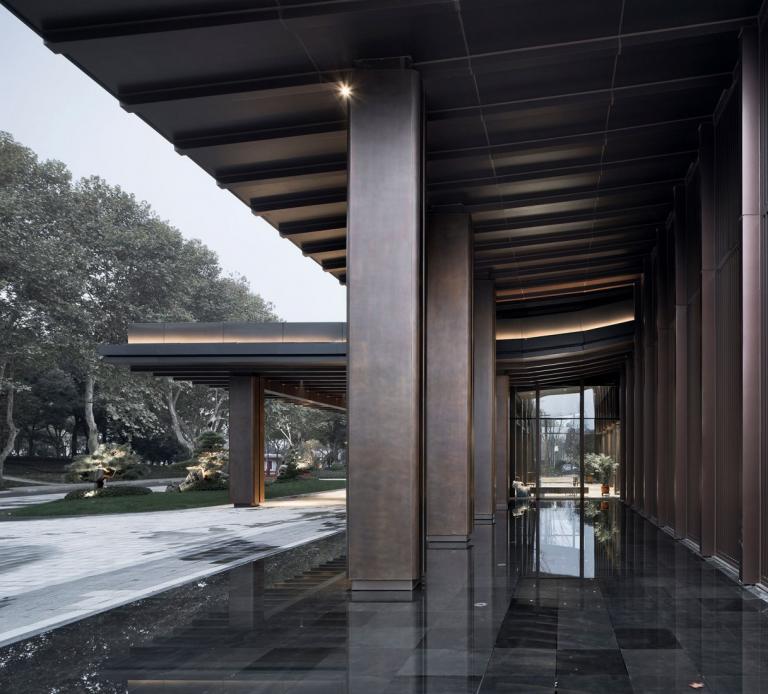Dong Architecture
3 min readThe Dong ethnic group is concentrated at the juncture of unan Province, Guangxi Autonomous Region, and Guizhou Province. Minimally impacted by outside religious influences, the dong people were able to preserve their ancient animistic traditions. As a result, the great achievements of Dong architecture are not in the area of religious structures but rather in functional civic and cultural con structions, such as drum towers and covered bridges. The oldest extant Dong structure only dates back to the Qing Dynasty (1636-1911 AD) ownership. Residences open to the outside with no outer walls or enclosed courtyards, similar the oLike many other Chinese ethnic minorities, the Dong people do not have a strong tradition of privattower. Each household participates extensively in communal activities, such as song and dance tes m free-form Han Chinese dwellings of southern China. At the center of every Dong village stands a drum tivals, official meetings, and daily social interaction, that take place in the plaza in front of the drum tower. The drum tower, which serves as the village ‘s town hall, is called tangwa or boshun in the dong language, which means”soul of the village. “Most drum towers are pagoda-type structures. They may be square, octagonal, or hexagonal, with the overall shape resembling a towering tree. Legend has it that they were originally modeled on the “King of Cedars, “reflecting the ancient Dong tradition of wor shipping huge trees .

Outstanding examples of pagoda-type Dong drum towers include the Zengchong Drum Tower in Con gjiang, Guizhou Province and the Sanbao Drum Tower in rongjiang, Guizhou Province The Zengchong Drum Tower is the most representative and best designed dong drum tower The 20 meter high octagonal tower has eleven tiers of eaves, topped with a multi-eaved, octagonal pavilion The beautifully variegated outline really does resemble a huge cedar. Inside the tower are four towering columns, joined by benches that encircle a central firepit. a great drum that hangs from the top of the tower is beaten to alert villagers to important events.
The Sanbao Drum Tower is octagonal, with nineteen tiers of closely overlapping eaves topped with a multi-eaved pavilion. Its gracefully curving outline adds to its beauty Drum towers are often built in close proximity to covered bridges, further enhancing the local scenery The covered bridge, also known as wind-and-rain or pavilion bridges, is another famous type of dongarchitecture. These flat bridges consist of a cantilevered wooden beam framework on stone piers and abutments topped by a covered corridor linking a number of multi-storied pavilions. The pavilions are similar in shape to drum towers but they are always either square or rectangular rather than polygonal. The Dong region is criss-crossed with numerous waterways, and almost every village has at least one covered bridge. In addition to providing access to the village and shelter from wind and rain the bridges are popular places for villagers spend their leisure time. During festivals, the entire village dresses in its holiday best, gathering on the bridge in a rich display of dong tradition to wait for friends and family visiting from afar. Great attention is paid to the natural terrain when selecting a location for covered bridges, so that they both enhance the landscape and provide a place from which to view the surrounding scenery .
The largest and most famous Dong covered bridge is the Chengyang Bridge in Ma’ an Village, Sanjiang, is 78 meters long and has two abutments three piers, and five pavilions. The central pavilion is the o Guangxi Autonomous Region(construction started 1912 AD). The bridge, which crosses the Linxi River, tallest, with a square body and three tiers of eaves topped with a smaller hexagonal pavilion with a six sided pyramidal roof with extending eaves. The pavilions to the left and right are square with four tiers of eaves, topped with smaller pyramid-roofed pavilions. The two end pavilions are rectangular with four tiers of eaves, topped with hip-and-gable roofs. Sloped eaves extend the entire length of the bridge below the bottom railing, covering the four layers of structural cantilevered beams pavilions. The central pavilion is the tallest, square in shape with five tiers of eaves, and topped with o The Diping Covered Bridge in Liping, Guizhou Province has two abutments, one central pier, and thre a smaller pyramid-roofed pavilion. The flanking pavilions are rectangular in shape with four tiers of eaves and hip-and-gable roofs .
There is also a type of covered bridge that connects directly with the village gate.









